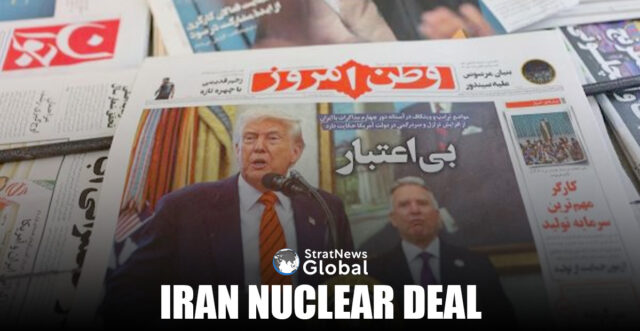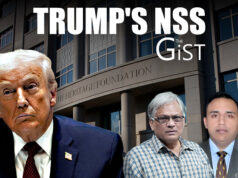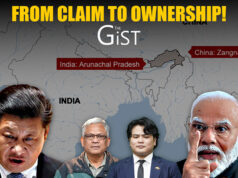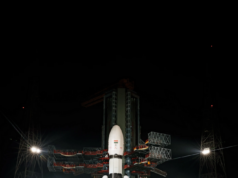U.N. inspectors encountered a major gap in oversight at Iran’s Fordow nuclear site last year when trucks brought in advanced uranium-enriching centrifuges in a facility built inside a mountain south of Tehran.
While Iran had notified the International Atomic Energy Agency that hundreds of extra IR-6 centrifuges would be installed at Fordow, the inspectors had no idea where the sophisticated machines had come from, an official familiar with the U.N. monitoring work said.
The episode encapsulated how the U.N. nuclear watchdog has lost track of some critical elements of Iran’s nuclear activities since U.S. President Donald Trump ditched a 2015 deal that imposed strict restrictions and close IAEA supervision.
Key blind spots include not knowing how many centrifuges Iran possesses or where the machines and their parts are produced and stored, quarterly IAEA reports show. The agency has also lost the ability to carry out snap inspections at locations not declared by Iran.
US-Iran Talks
The U.S. has started new talks with Iran, aiming to impose fresh nuclear restrictions on Tehran. For any deal to succeed, though, those IAEA blind spots will need to be closed, according to more than a dozen people familiar with Iran’s atomic activities, including officials, diplomats and analysts.
“There are gaps in our knowledge of Iran’s nuclear programme that must be addressed in order to have a baseline understanding of its current scale and scope,” said Ali Vaez, Iran project director at the International Crisis Group think-tank.
“That may take months to piece together but it’s critical if the IAEA and parties to the negotiations are to have confidence in the non-proliferation benefits of an agreement.”
The IAEA, which answers to 180 member states, declined to comment for this article. The Iranian foreign ministry and Iran’s Atomic Energy Organisation didn’t respond to queries.
Iran has long held that it was entitled to scrap its commitments to enhanced IAEA supervision under the 2015 deal after the U.S. unilaterally withdrew. It rejects Western accusations that it is at least keeping the option of building a nuclear weapon open, saying its aims are purely peaceful.
The Islamic Republic has nonetheless made big strides in uranium enrichment in recent years.
Nuclear Deal
When the U.S. and world powers struck the nuclear deal with Iran in 2015, they sought to limit Tehran’s “breakout time” – how long it would need to produce enough fissile material for a single atom bomb – to at least a year by capping the purity to which it could enrich uranium at below 4%.
Now that breakout time has all but evaporated. Iran has installed ever more advanced centrifuges and is enriching to up to 60% purity, close to the roughly 90% of weapons grade.
After five rounds of discussions between Iranian and U.S. negotiators, several obstacles remain. Among them are Iran’s rejection of an American demand that it commit to scrapping enrichment and its refusal to ship its existing stockpile of highly enriched uranium abroad.
Given the window has closed to restore as long a breakout time as in 2015, any new deal would instead have to bolster IAEA supervision of the nuclear programme, said the official who also requested anonymity due to the sensitivity of the matter.
While the IAEA sees the roughly 20,000 centrifuges installed at Iran’s enrichment facilities, it does not know how many more have been produced in recent years and are now elsewhere.
A U.S. State Department spokesperson said IAEA monitoring was critical for the international community to understand the full extent of Iran’s nuclear programme, though adding it was not in America’s interest to “negotiate these issues publicly”.
Iran Rejects US Enrichment Demand
The 2015, Obama-era deal capped the purity to which Iran could enrich uranium at 3.67%, well below the 20% it had already reached then, and restricted the number and type of centrifuges Iran could use and where. Enrichment was not allowed at Fordow.
IAEA reports showed Iran adhered to limits on key elements of its nuclear programme, including enrichment, until more than a year after Trump abandoned the pact in 2018, during his first term. The U.S. president decried a “horrible one-sided deal” that did not address other issues such as Iran’s ballistic missile programme or its role in regional conflicts.
His withdrawal prompted Tehran to retaliate, both by eventually pushing far beyond those enrichment and centrifuge limits and by scrapping the extra IAEA supervision put in place after the 2015 deal.
Iran is still, however, providing IAEA inspectors with regular access to its facilities as part of longer-standing obligations as a party to the nuclear Non-Proliferation Treaty, under which there is no cap on enrichment levels but nuclear technology must be used for peaceful purposes.
U.S. and Iranian negotiators started their new nuclear talks in April, with Trump having threatened military action if no pact is struck.
IAEA chief Rafael Grossi said in Washington in April that it is important Iran accept “indispensable” restrictions to enable his agency to reassure the world about Iran’s intentions, without specifying the curbs. He has also said last week any new deal should provide for “very robust inspection by the IAEA”.
The IAEA says it cannot currently “provide assurance that Iran’s nuclear programme is exclusively peaceful”.
Completing The Puzzle
Diplomats have for years expected that any new deal will task the IAEA with creating a so-called baseline, a complete picture of where all areas of Iran’s nuclear programme stand, filling in gaps in the agency’s knowledge as much as it can.
Establishing a baseline will be particularly challenging since some blind spots have lasted so long they cannot fully be filled in; the IAEA has said in quarterly reports to member states it has lost “continuity of knowledge” and will not be able to restore it on production and inventory of centrifuges, certain centrifuge parts and yellowcake.
“Assembling that puzzle will be an essential part of any deal. We know establishing that new baseline will be hard,” said Eric Brewer, a former U.S. intelligence analyst now at the Nuclear Threat Initiative, a non-governmental organisation focused on security and based in Washington.
“It will depend in part on how cooperative Iran is.”
Even then, there is a significant risk the IAEA would lack a complete picture of Tehran’s activities, he added.
“Is that uncertainty acceptable to the United States?” Brewer said. “Important question.”
(With inputs from Reuters)





